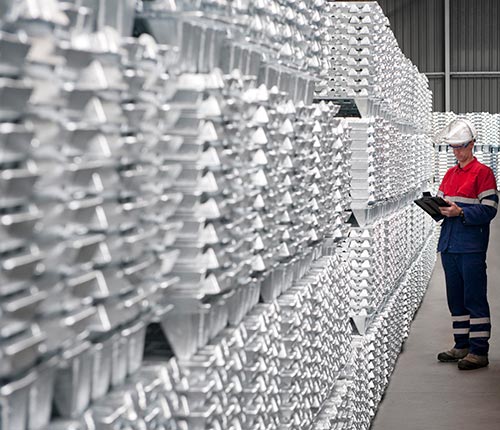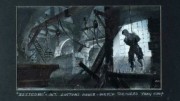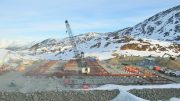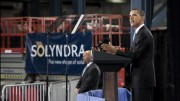Falling energy and metal prices are leaving many investors in the mining space anxious about what lies in store next year. Julian Kettle, head of metals and mining research at Wood Mackenzie in London, recently took time to speak to The Northern Miner about copper, nickel and zinc.
The Northern Miner: Copper prices sank on Nov. 28 to more than a four-year low of below US$2.88 per lb. Some analysts see improving copper market fundamentals in late 2015. Would you agree?
Julian Kettle: On copper we’re mildly bearish over the medium-term, but pretty bullish over the long-term. Copper is always the most interesting metal, and the issue with copper is that we get disruptions to supply on an ongoing basis. Mine disruptions will typically vary from 3–8% of global copper supply, but this year we think it’s going to be above trend at 5–5.5%. So this year, we’ll see about 1 million tonnes of copper supply taken out of the market.
TNM: Why are disruptions so typical of copper?
JK: There are a whole range of factors. You’ve got pit-wall failures, strike action, technical issues, slow ramp-ups, weather-related issues and grade. If you were to look at what’s happened so far this year, the major contributor to disruption has been lower ore grades, slow project ramp-ups and a disruption to supply out of Indonesia because of the concentrate export ban. You had Grasberg reduce production levels to 60% of capacity and you also had a short-term stoppage of production at Batu Hijau.
There is this misconception that there is a shortage of projects. But we see 4 million tonnes of net copper supply coming on stream between the end of 2013 and the end of 2018. We’re not looking at it peaking until 2017. We also believe demand is still looking reasonably strong despite concerns around China. When it comes to China — the phrase we use quite often, which was coined by one of our analysts — is that it’s: “slower not lower.” Even with lower growth rates, China will represent between 60% and 80% of global demand growth for all global commodities over the next five years.
Over the last 10 years, copper’s annual average growth rate in demand has been 13% for China. The annual growth rate over the next five years is going to be 5%. Over the last 10 years, average annual copper consumption has been 600,000 tonnes, and going forward it’s going to be 500,000 tonnes, despite the massive decline in growth rates. The scale means we’re still going to see growth in demand, and the same applies to nickel, lead, zinc and aluminum.
Copper demand is going to be quite robust going forward, and the key issue right now is the fact that the market is trending to oversupply, so we’ve got increases in stocks, and the net result of these increases year-on-year over the next five years is that we’ll see stocks rise from 70 days’ worth of consumption to 90 days’ worth of consumption, and as a result prices will tend downwards. We think the low point for copper prices will be US$6,000 per tonne in 2017.
There are enough copper projects to more than meet demand in the medium-term. But looking further out, we see a widening supply gap for copper projects. Part of that is the natural state of the market. If you need projects in 10 years’ time, you don’t need to press the button now, but the market has to be aware that there is a need for projects to be developed, and the price of US$6,000 per tonne is not enough to incentivize new production.
So we see US$6,000 per tonne as the low point, and then we see demand eat into stock piles, stocks fall and prices rise.
We think the price needs to trend up to an incentive price level, which is just shy of US$8,000 per tonne.
So the message is that there is a little downward pressure in the medium-term, but long-term, prices will recover over a three- to five-year period. How quickly it gets there depends on how quickly it takes stocks to decrease. The positive story is that we still have robust demand — a bit of indigestion with the oversupply situation, but the downside is somewhat limited.
TNM: At the end of November nickel finished at US$7.36 per lb. (US$16,228 per tonne). What’s in store for nickel prices in 2015?
JK: We’re reasonably bullish on nickel. The big noise is the Indonesian export ban, and it was reasonably well flagged. There was scepticism on whether it would be enacted, but it has been enacted — and as a result you’ve seen the end of exports of nickel pig iron from Indonesia.
The interesting thing is that the Indonesian government gave the Chinese — who are the biggest importers of nickel pig iron — plenty of advanced warning. So what China did was stockpile nickel pig iron ore from Indonesia to meet demand. But the way the law stands, you cannot export unprocessed ore, and in order to get your nickel out, you have to build a nickel pig iron smelter.
The Indonesian government would have us believe that there are 50 nickel pig iron smelter projects under development. We doubt that: we believe there will be seven under construction by 2015, and by 2016, another 10 may have broken ground, so it’s just a long, slow process.
The point about developing smelters in Indonesia is that it will take longer to build them, and they will be more expensive. They take longer because there’s a need to install power plants, put infrastructure in place and permit, and all of this will add to the cost of doing business.
We also don’t think they’ll proceed as quickly because there is still a perception that the Indonesian government will lift its ban on exports. Why would you spend time and effort to build a smelter in Indonesia if the Indonesian government may lift the ban?
TNM: How has the ban impacted China so far?
JK: It has had a significant impact on China because it is a major importer. How has China mitigated it? It built up stockpiles. It increased its imports of nickel pig iron ore from the Philippines. The critical point about Filipino ore, however, is that it is of a lower quality than Indonesian ore. And the Philippines has been mining its reserve base of higher-grade ore to meet some of China’s needs. Its reserves are not extensive enough to support a significant run of output, so it’s not the long-term solution Indonesia is.
If Indonesia is the long-term solution, then the only way to get exports into China is to establish nickel pig iron plants. But ramp-up from Indonesia is going to be slower than many anticipate. The other issue is that nickel pig iron production in China will not be impacted as greatly as some have thought because they’re blending the Filipino ore.
TNM: So what do you think will happen to nickel prices next year?
JK: We believe the nickel market will record successive deficits in 2015, 2016 and 2017, while nickel pig iron production in Indonesia picks up. So prices will be on a rising trend. In 2016 and 2017 prices will be anywhere between US$11 per lb. and US$12 per lb. It really does depend on how quickly nickel pig iron smelters can ramp-up.
TNM: Zinc has been the star performer this year. Prices for the metal are up by 10% so far, and the price reached a three-year high of more than US$2,400 per tonne (US$1.08 per lb.) mid-year.
JK: The key issue around
zinc is that there is a looming supply shortage. One of the reasons is that we’ve got growth in consumption demand for fine zinc in China. You also have a number of zinc mine closures. That means we’ll need 600,000 tonnes of new zinc supply over the next 10 years, and that’s going to be challenging for the industry to deliver.
In order to meet the looming shortfall, all zinc projects will need to get the green-light within the next 18 months, and for that to happen, they need to get permitting, prefeasibility and feasibility studies, and financing.
We estimate the projects will need around US$7 billion of investment, which is a record capital investment for the zinc industry.
Right now, you’ve got very little interest in zinc deposits. There is a looming supply shortfall, and there’s just not enough earnings before interest, taxes, depreciation and amortization from zinc mines. Glencore is different — it’s in the zinc space. But the ability of other companies to finance zinc projects is going to be quite hard. And when you’ve got juniors looking at zinc projects it introduces risk for the banks, because juniors and mid-caps have by and large got limited experience in zinc projects.
In addition, the projects themselves are not low-hanging fruit. So there are issues around high capital costs, location and geology. It just means it’s going to be more difficult to develop zinc projects, so we doubt projects are going to come online quickly enough.
That US$7-billion investment in new zinc projects that is required equates to 2.3 million tonnes of capacity. If it comes on stream and on time as envisaged, then the market will be reasonably supplied, but we doubt there’s enough momentum for all those projects to come on stream.
We see a zinc market that is going to see successive deficits going forward, and that means seeing prices on a significant rising trend.
We forecast zinc prices could rise to US$3,500 a tonne (US$1.58 per lb.) or above on a medium-term horizon. The incentive price is US$2,600 to US$2,700 per tonne in 2014.
So you’ve got prices rising, and that may induce enough projects to meet demand. But it’s hard to identify projects that will meet demand, and there’s some uncertainty about what is left to develop in China.
TNM: What about zinc recycling?
JK: We think there will be a push into the recycling of zinc, especially in China. We believe the recycling of zinc from EAF dust [which contains zinc and is made by steel mills] will be an increasing trend as the zinc price rises and as the zinc content of EAF dust rises from a low level.
The rise in the zinc content of EAF dust in China will reflect the rising use of galvanized steel, and the increasing use of that higher zinc-containing steel scrap as EAF feed. We believe that another 700,000 tonnes of zinc a year could be recovered over the next decade globally, reducing the requirement for primary zinc mine capacity pro rata.
But in order for this to occur, there will need to be investment in additional Waelz kiln capacity, which will be incentivized by the high zinc-price environment.
TNM: Iron ore spot prices have slipped below US$70 per tonne for the first time since 2009, and many believe that the price will fall further. How do you expect iron ore to perform next year?
JK: The issue with iron ore is that the seaborne market is oversupplied [with 100 million tonnes of additional supply this year], and yet incremental demand growth is only going to be 45 million to 50 million tonnes. So we see prices next year averaging US$80 cost and freight, and while that implies something of a recovery from where we are now, that will rest on restocking in China.
It’s going to be a long, hard slog for iron ore. The market is in oversupply, and prices have responded appropriately. We’ve started to see bankruptcies. We’ve started to see Chinese domestic supply come out. It’s going to be a number of years before we see a significant recovery in iron ore.
TNM: In late November Fortescue Metals — the fourth-largest iron ore exporter in the world — halved its capex guidance for fiscal 2015, revising it to US$650 million from its previous budget of US$1.3 billion. Do you expect to see a flood of other project spending cuts in the industry?
JK: Fortescue is the highest-cost producer of the ‘big four,’ so that doesn’t come as a surprise.
The iron ore price will need to drop a lot further before Vale, Rio Tinto and BHP Billiton would be worried. They have very low costs.






Be the first to comment on "Wood Mac sees stronger prices for copper, nickel, zinc"